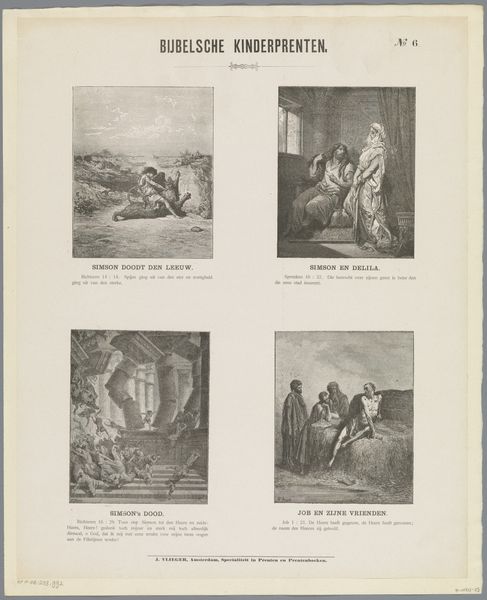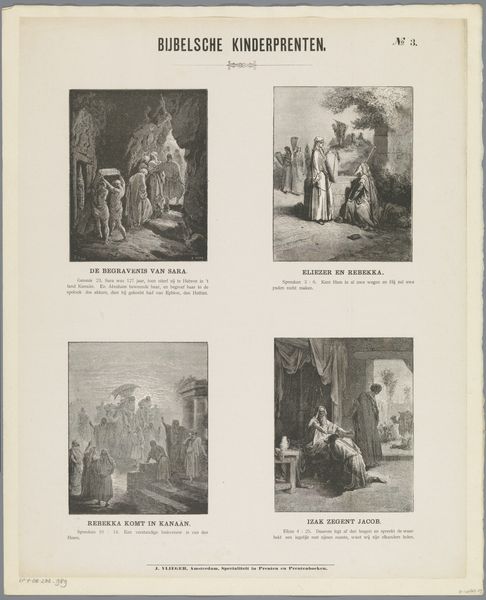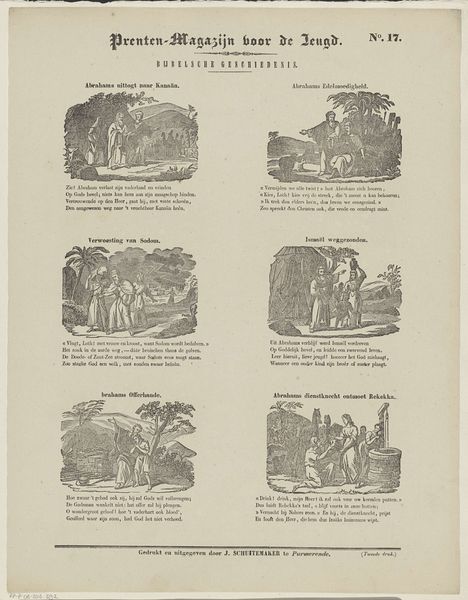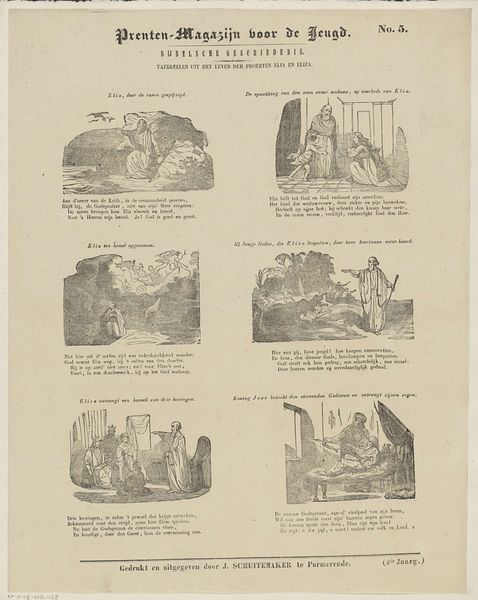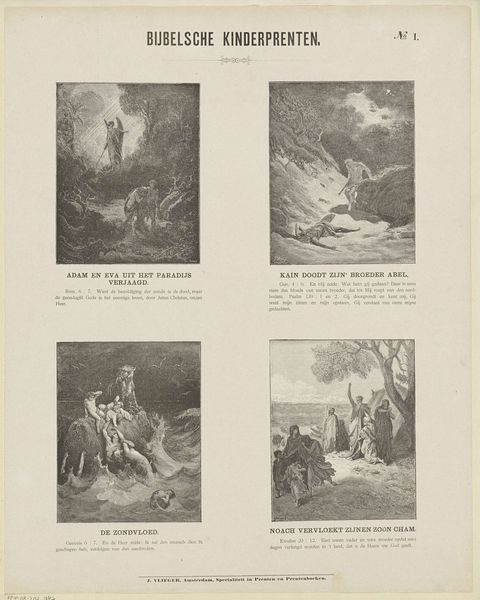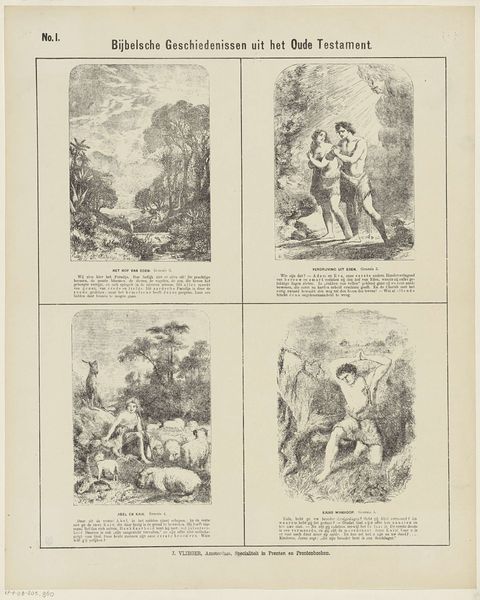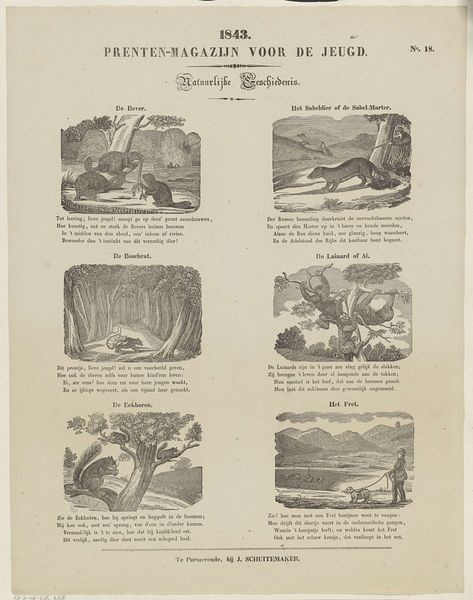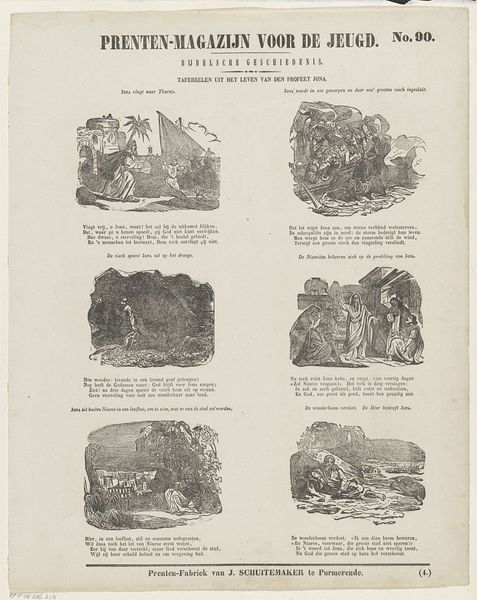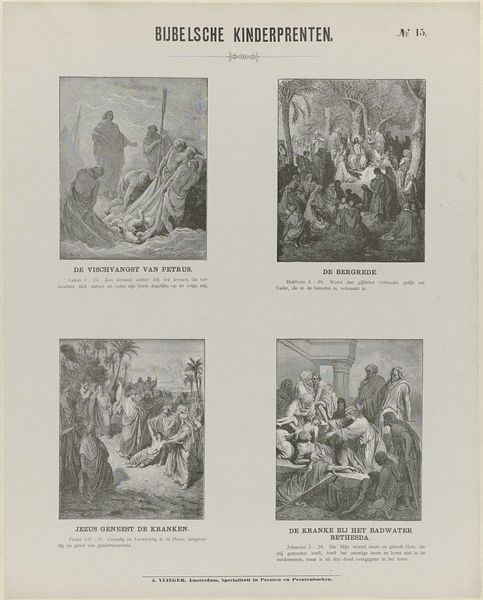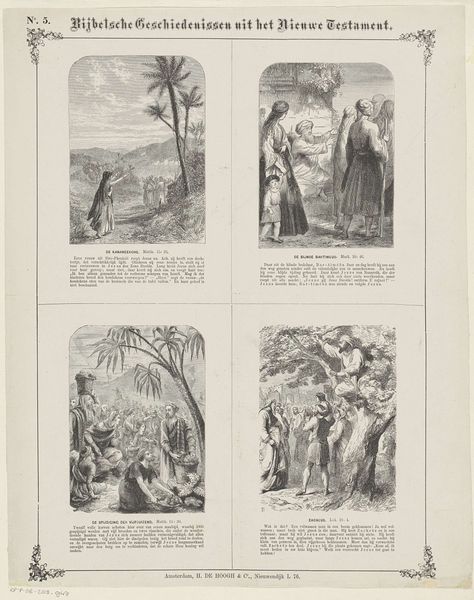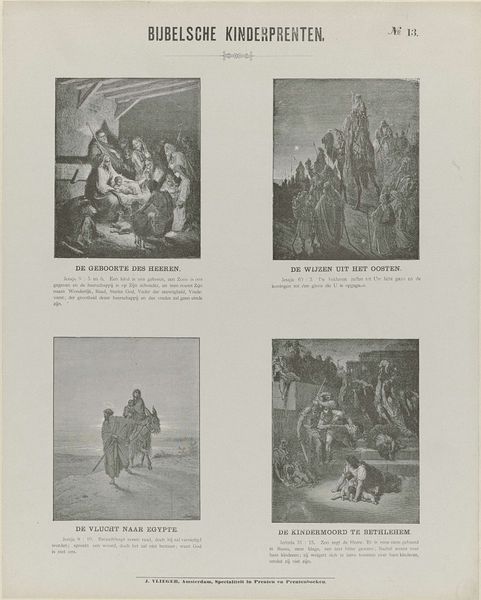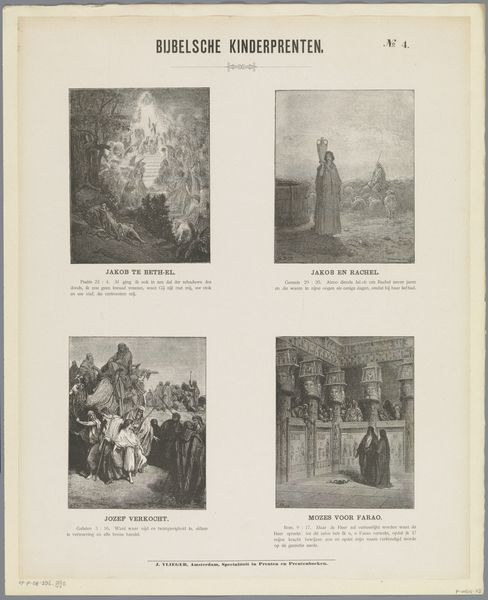
graphic-art, print, paper, engraving
#
graphic-art
#
narrative-art
#
dutch-golden-age
# print
#
paper
#
history-painting
#
engraving
Dimensions: height 430 mm, width 344 mm
Copyright: Rijks Museum: Open Domain
Editor: This print, "Bijbelsche Kinderprenten" by Adolphe François Pannemaker, dates from 1869 to 1908. It’s a series of engravings on paper, depicting scenes from the Bible. I'm struck by how these familiar stories are presented in such a stark, almost pedagogical way. What do you see in this piece, considering its historical context? Curator: This work exists as a fascinating intersection of religious instruction, popular culture, and print technology of the late 19th century. Consider where it was displayed and whom it was targeting; “kinderprenten,” implying a domestic setting. Think of it less as art, more a readily-accessible visual tool. How might this context change the way we view these biblical narratives? Editor: So, it's not just about the artistry, but also about how it functioned as a form of accessible religious education within the household? The choice of the scenes would then become especially relevant, reinforcing certain values? Curator: Precisely. These weren’t chosen at random. The stories chosen—Moses striking the rock, the sacrifice of Jephthah's daughter—highlight themes of obedience, sacrifice, and divine intervention. These are core tenets promoted and propagated throughout socio-cultural settings. How were the ethics perceived then? Editor: I suppose, in that light, the sometimes harsh imagery aligns with the era's views on moral education, less concerned with sensitivities than with instilling specific doctrines. I hadn't thought about it that way before. Curator: And consider the print itself. Its accessibility and reproducibility underscore a shift in the dissemination of religious knowledge, taking it out of solely ecclesiastical hands. Mass production meant wider influence. Editor: I’m realizing how easily I dismissed it as a simple children's illustration when it's actually a reflection of so much more, a powerful cultural tool. Curator: Indeed. The public role of art is critical. Art, as cultural material, influences social order. Understanding the artwork's place is paramount to understanding the art itself.
Comments
No comments
Be the first to comment and join the conversation on the ultimate creative platform.
